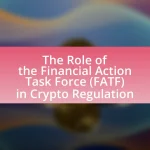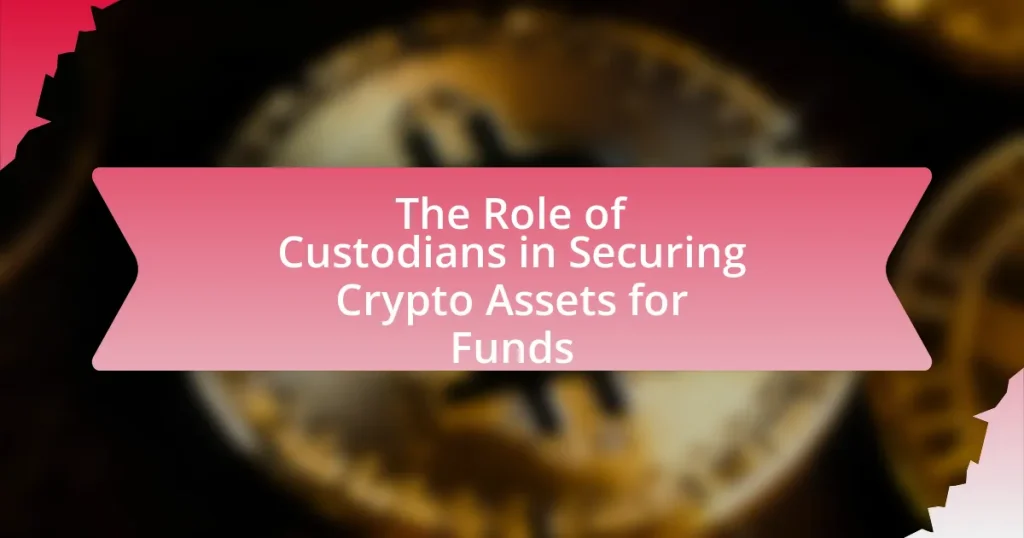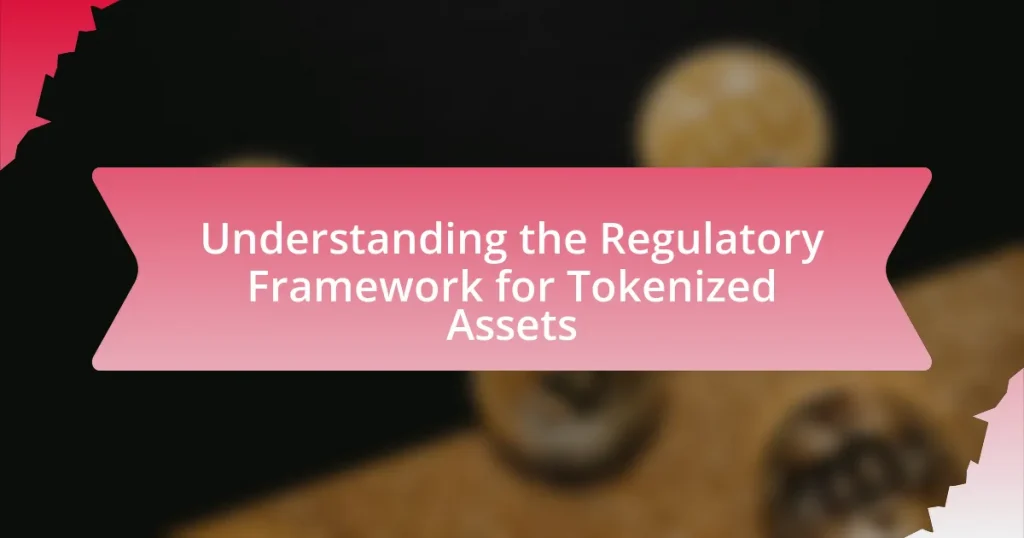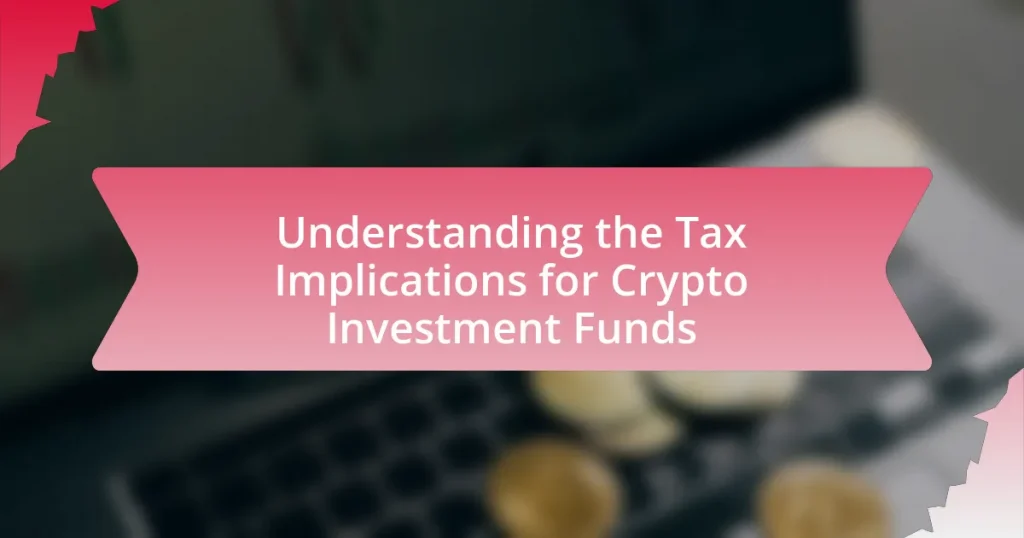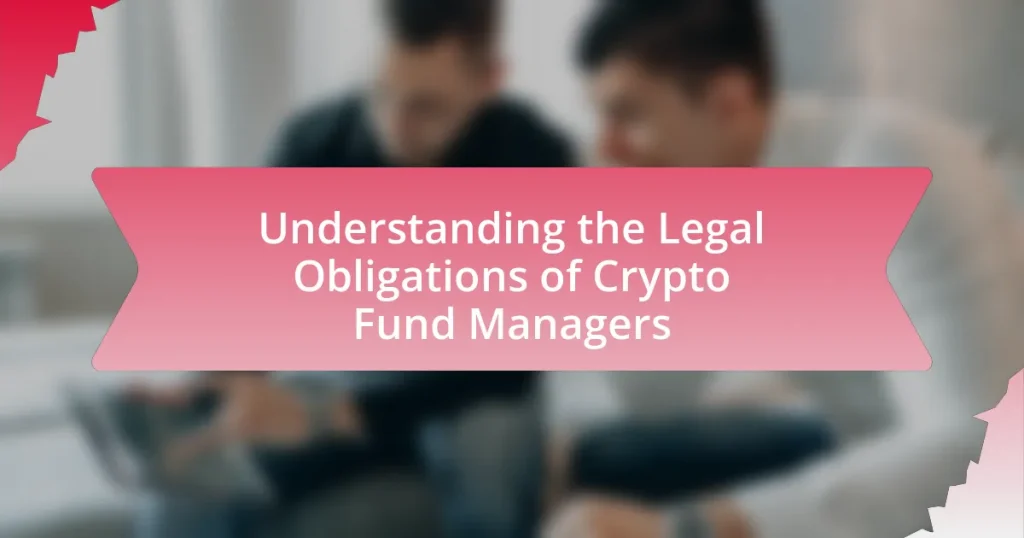Custodians are essential entities in the crypto asset ecosystem, responsible for the safekeeping, management, and protection of digital assets for funds. They employ advanced security measures, such as multi-signature wallets and cold storage, to mitigate risks associated with theft and loss while ensuring compliance with regulatory standards. The article explores the various roles custodians play, including enhancing security, facilitating regulatory compliance, and providing insurance coverage, as well as the challenges they face in the evolving crypto landscape. Additionally, it discusses the importance of selecting the right custodian based on criteria such as reputation, security measures, and insurance offerings, ultimately highlighting best practices for funds in managing custodial relationships.
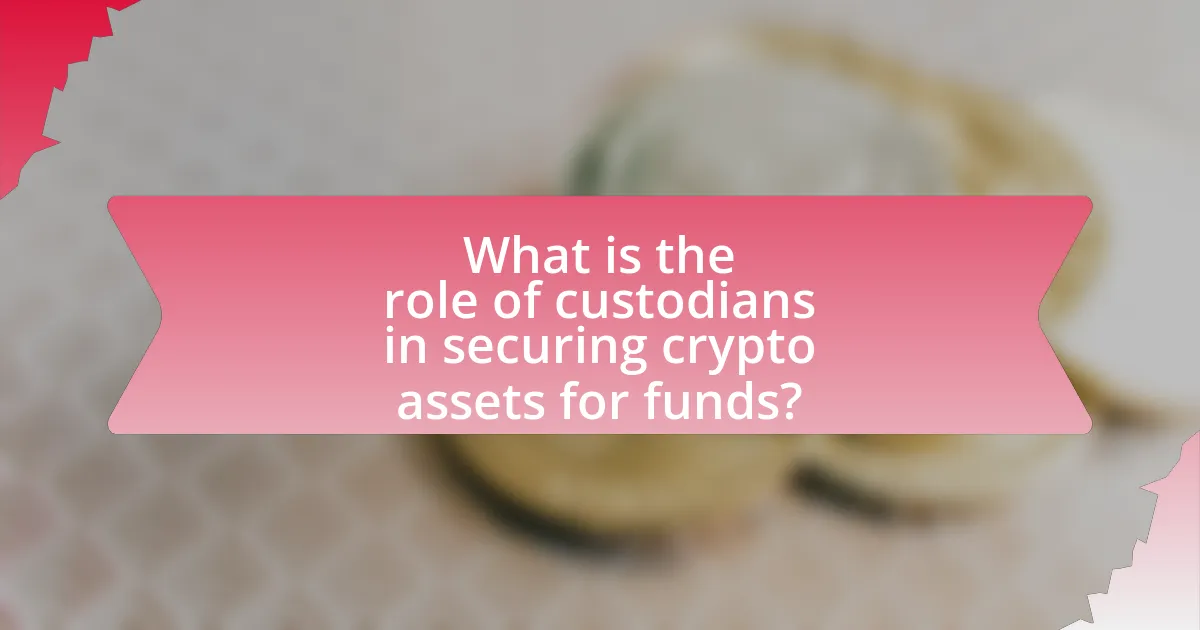
What is the role of custodians in securing crypto assets for funds?
Custodians play a critical role in securing crypto assets for funds by providing safekeeping, management, and protection of digital assets. They utilize advanced security measures, such as multi-signature wallets and cold storage solutions, to safeguard these assets against theft and loss. According to a report by Deloitte, custodians are essential for institutional investors as they ensure compliance with regulatory standards and provide insurance coverage for the assets held. This combination of security, regulatory compliance, and insurance makes custodians indispensable in the crypto asset ecosystem for funds.
How do custodians ensure the safety of crypto assets?
Custodians ensure the safety of crypto assets through a combination of advanced security measures, including cold storage, multi-signature wallets, and regulatory compliance. Cold storage involves keeping the majority of crypto assets offline, significantly reducing the risk of hacking. Multi-signature wallets require multiple private keys for transactions, adding an extra layer of security. Additionally, custodians adhere to strict regulatory standards, which often include regular audits and insurance coverage for digital assets, further enhancing the protection of clients’ holdings. These practices collectively mitigate risks associated with theft and loss, ensuring a secure environment for managing crypto assets.
What security measures do custodians implement?
Custodians implement several security measures to protect crypto assets, including multi-signature wallets, cold storage solutions, and robust access controls. Multi-signature wallets require multiple private keys for transactions, significantly reducing the risk of unauthorized access. Cold storage involves keeping the majority of assets offline, which protects them from online threats such as hacking. Additionally, custodians enforce strict access controls, including biometric authentication and role-based permissions, to ensure that only authorized personnel can access sensitive information and assets. These measures collectively enhance the security framework custodians use to safeguard crypto assets for funds.
How do custodians protect against cyber threats?
Custodians protect against cyber threats by implementing robust security measures such as multi-factor authentication, encryption, and continuous monitoring of their systems. These measures ensure that access to crypto assets is tightly controlled and that any unauthorized attempts are detected and mitigated in real-time. For instance, the use of encryption protects sensitive data during transmission and storage, while multi-factor authentication adds an additional layer of security by requiring multiple forms of verification before granting access. Continuous monitoring allows custodians to identify and respond to potential threats swiftly, thereby reducing the risk of breaches.
Why are custodians essential for fund managers?
Custodians are essential for fund managers because they provide secure storage, safeguarding of assets, and regulatory compliance. Fund managers rely on custodians to protect their clients’ investments from theft, loss, or fraud, particularly in the volatile crypto market. For instance, custodians implement advanced security measures, such as multi-signature wallets and cold storage solutions, to ensure that digital assets are kept safe. Additionally, custodians assist fund managers in meeting regulatory requirements, which is crucial for maintaining investor trust and adhering to legal standards in the financial industry.
What risks do fund managers face without custodians?
Fund managers face significant risks without custodians, including increased exposure to fraud, theft, and operational errors. Without custodians, fund managers lack a secure and regulated environment for asset storage, which can lead to unauthorized access and loss of assets. Additionally, the absence of custodial services can result in compliance issues, as custodians often ensure adherence to regulatory requirements, thereby exposing fund managers to legal liabilities. Historical data shows that funds without custodial oversight have experienced higher instances of asset misappropriation, underscoring the critical role custodians play in safeguarding investments.
How do custodians enhance compliance for funds?
Custodians enhance compliance for funds by implementing rigorous regulatory frameworks and monitoring systems. They ensure adherence to legal requirements, such as Anti-Money Laundering (AML) and Know Your Customer (KYC) regulations, which are critical for maintaining the integrity of financial transactions. Custodians utilize advanced technology to track and report transactions, providing transparency and accountability. For example, a study by Deloitte highlights that custodians play a vital role in mitigating risks associated with regulatory non-compliance, thereby safeguarding both the funds and their investors.
What types of custodians are available for crypto assets?
There are several types of custodians available for crypto assets, including traditional custodians, specialized crypto custodians, and self-custody solutions. Traditional custodians, such as banks and financial institutions, have begun to offer crypto custody services, leveraging their established infrastructure and regulatory compliance. Specialized crypto custodians focus exclusively on digital assets, providing tailored security measures and insurance options specific to cryptocurrencies. Self-custody solutions allow individuals to manage their own crypto assets using hardware wallets or software applications, giving them full control over their private keys. Each type of custodian serves different needs, from institutional investors requiring regulatory compliance to individual users seeking autonomy over their assets.
What distinguishes traditional custodians from crypto custodians?
Traditional custodians primarily manage physical assets and securities, while crypto custodians focus on digital assets like cryptocurrencies. Traditional custodians operate within established regulatory frameworks, ensuring compliance with laws governing physical asset management, whereas crypto custodians navigate a rapidly evolving regulatory landscape specific to digital currencies. For instance, traditional custodians often provide services such as safekeeping, settlement, and reporting for stocks and bonds, while crypto custodians utilize advanced technology to secure private keys and facilitate blockchain transactions. This distinction highlights the differing asset types and regulatory environments that shape the roles and responsibilities of custodians in each domain.
How do specialized custodians cater to different fund needs?
Specialized custodians cater to different fund needs by offering tailored services that address the unique requirements of various investment strategies and asset types. For instance, they provide customized security measures, such as multi-signature wallets and cold storage solutions, to protect digital assets from theft and hacking. Additionally, custodians may offer compliance support to ensure that funds adhere to regulatory requirements, which is crucial for institutional investors. They also facilitate seamless integration with trading platforms and provide reporting tools that align with the specific operational needs of different funds. This adaptability is essential, as funds may vary in their investment focus, risk tolerance, and liquidity requirements, necessitating a custodian that can meet these diverse demands effectively.
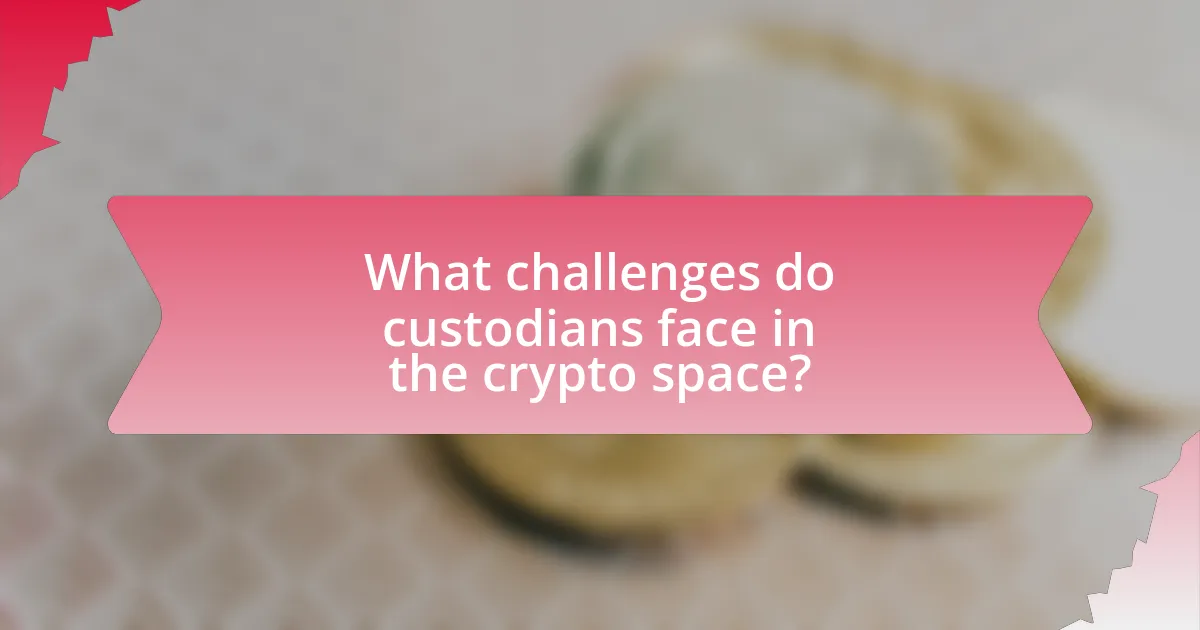
What challenges do custodians face in the crypto space?
Custodians in the crypto space face significant challenges, including regulatory compliance, security risks, and technological complexities. Regulatory compliance is particularly challenging due to the evolving nature of cryptocurrency laws across different jurisdictions, which can lead to uncertainty and increased operational costs. Security risks are heightened in the crypto environment, as custodians must protect against hacking, theft, and fraud, with incidents like the 2014 Mt. Gox hack highlighting the vulnerabilities in asset protection. Additionally, technological complexities arise from the need to manage various blockchain protocols and digital asset types, requiring custodians to invest in advanced technology and skilled personnel to ensure effective asset management and security.
How do regulatory changes impact custodians?
Regulatory changes significantly impact custodians by altering their operational frameworks and compliance requirements. For instance, when jurisdictions implement stricter anti-money laundering (AML) and know-your-customer (KYC) regulations, custodians must enhance their due diligence processes to meet these new standards. This often involves investing in advanced technology and training staff to ensure compliance, which can increase operational costs. Additionally, regulatory changes can affect the types of assets custodians are allowed to hold, as seen in the European Union’s Markets in Crypto-Assets (MiCA) regulation, which sets specific guidelines for asset management. Consequently, custodians may need to adapt their service offerings and risk management strategies to align with evolving legal landscapes, ensuring they remain compliant while safeguarding client assets.
What are the key regulations affecting crypto custodians?
Key regulations affecting crypto custodians include the Financial Action Task Force (FATF) guidelines, the Securities and Exchange Commission (SEC) regulations, and the European Union’s Markets in Crypto-Assets (MiCA) framework. The FATF guidelines mandate that custodians implement anti-money laundering (AML) and know your customer (KYC) protocols to prevent illicit activities. The SEC regulates custodians by classifying certain cryptocurrencies as securities, requiring compliance with securities laws. MiCA aims to create a comprehensive regulatory framework for crypto assets in the EU, establishing rules for custodians to ensure consumer protection and market integrity. These regulations collectively shape the operational landscape for crypto custodians, ensuring they adhere to legal standards and maintain the security of digital assets.
How do custodians adapt to evolving compliance requirements?
Custodians adapt to evolving compliance requirements by implementing robust regulatory frameworks and leveraging technology for real-time monitoring. They continuously assess changes in regulations, such as the Financial Action Task Force (FATF) guidelines, and adjust their policies and procedures accordingly to ensure compliance. For instance, custodians often invest in advanced compliance software that automates reporting and enhances transaction monitoring, which helps them meet Anti-Money Laundering (AML) and Know Your Customer (KYC) obligations effectively. This proactive approach not only mitigates risks associated with non-compliance but also builds trust with clients and regulators, ensuring the secure management of crypto assets.
What technological challenges do custodians encounter?
Custodians encounter several technological challenges, including cybersecurity threats, regulatory compliance, and the integration of blockchain technology. Cybersecurity threats are significant, as custodians must protect digital assets from hacking and fraud; for instance, in 2021, cryptocurrency exchanges lost over $1.4 billion to hacks. Regulatory compliance poses challenges due to the evolving legal landscape surrounding cryptocurrencies, requiring custodians to adapt their systems to meet various jurisdictional requirements. Additionally, integrating blockchain technology into existing financial systems can be complex, as custodians must ensure interoperability and scalability while maintaining security and efficiency.
How do custodians manage the integration of new technologies?
Custodians manage the integration of new technologies by implementing robust frameworks that ensure security, compliance, and efficiency. They conduct thorough assessments of emerging technologies to evaluate their potential impact on asset security and operational processes. For instance, custodians often collaborate with technology providers to customize solutions that align with regulatory requirements and industry standards. Additionally, they invest in training their staff to effectively utilize new tools and systems, ensuring that personnel are equipped to handle the complexities of digital asset management. This approach is validated by the increasing adoption of blockchain technology in custody services, which enhances transparency and traceability in transactions.
What role does blockchain play in custodian services?
Blockchain serves as a foundational technology for custodian services by providing secure, transparent, and immutable record-keeping for digital assets. This technology enables custodians to enhance the security of crypto assets through decentralized ledgers that prevent unauthorized access and fraud. For instance, blockchain’s cryptographic features ensure that transactions are verifiable and traceable, which is crucial for maintaining the integrity of asset management. Additionally, the use of smart contracts on blockchain platforms can automate compliance and reporting processes, further streamlining custodian operations. These attributes collectively reinforce the role of custodians in safeguarding crypto assets, ensuring that they meet regulatory standards while providing clients with confidence in the security of their investments.

What best practices should funds follow when selecting custodians?
Funds should prioritize selecting custodians with a strong regulatory compliance framework and proven security measures. Regulatory compliance ensures that custodians adhere to legal standards, which mitigates risks associated with fraud and mismanagement. Proven security measures, such as multi-signature wallets and cold storage solutions, protect assets from cyber threats. Additionally, funds should evaluate the custodian’s track record, including their history of asset protection and incident response. According to a report by the Financial Stability Board, custodians that implement robust security protocols significantly reduce the likelihood of asset loss. Therefore, focusing on regulatory compliance, security measures, and a solid track record are essential best practices for funds when selecting custodians.
What criteria should funds consider when choosing a custodian?
Funds should consider the custodian’s regulatory compliance, security measures, and reputation when choosing a custodian. Regulatory compliance ensures that the custodian adheres to legal standards, which is crucial for safeguarding assets. Security measures, such as multi-signature wallets and cold storage, protect against theft and hacking. A custodian’s reputation, supported by industry reviews and client testimonials, reflects its reliability and trustworthiness in managing crypto assets. These criteria collectively help funds mitigate risks associated with asset custody.
How important is the custodian’s reputation and track record?
The custodian’s reputation and track record are critically important in securing crypto assets for funds. A strong reputation indicates reliability and trustworthiness, which are essential for safeguarding digital assets. For instance, custodians with a proven history of secure asset management and compliance with regulatory standards are more likely to protect against theft, fraud, and operational failures. According to a report by the Financial Stability Board, custodians with established reputations have demonstrated lower incidences of security breaches, reinforcing the necessity of their track record in maintaining investor confidence and ensuring the integrity of the crypto ecosystem.
What role does insurance play in custodian selection?
Insurance plays a critical role in custodian selection by providing a safety net against potential losses due to theft, fraud, or operational failures. Custodians that offer comprehensive insurance coverage demonstrate their commitment to safeguarding assets, which is essential for building trust with clients. For instance, custodians may carry insurance policies that cover digital asset theft, ensuring that clients are compensated in the event of a security breach. This aspect of insurance not only mitigates risk but also serves as a competitive differentiator in the market, as clients often prioritize custodians with robust insurance protections when selecting a service provider.
How can funds ensure effective communication with custodians?
Funds can ensure effective communication with custodians by establishing clear protocols and regular reporting mechanisms. Clear protocols include defined communication channels, frequency of updates, and specific points of contact, which facilitate timely information exchange. Regular reporting mechanisms, such as scheduled performance reviews and compliance checks, help maintain transparency and accountability. For instance, a study by Deloitte highlights that structured communication frameworks significantly reduce misunderstandings and enhance operational efficiency in financial transactions.
What are the best practices for establishing a strong partnership?
The best practices for establishing a strong partnership include clear communication, mutual trust, and aligned goals. Clear communication ensures that all parties understand expectations and responsibilities, which is essential for effective collaboration. Mutual trust fosters a supportive environment where partners can rely on each other, enhancing cooperation and problem-solving. Aligned goals ensure that all partners are working towards the same objectives, which increases the likelihood of success. Research indicates that partnerships with these characteristics are more likely to achieve long-term success and sustainability, as evidenced by studies showing that organizations with strong collaborative practices report higher performance outcomes.
How can funds monitor custodian performance effectively?
Funds can monitor custodian performance effectively by implementing key performance indicators (KPIs) that assess service quality, security measures, and operational efficiency. These KPIs may include metrics such as transaction processing times, error rates, and compliance with regulatory standards. For instance, a study by Deloitte highlights that regular audits and performance reviews can provide insights into a custodian’s adherence to agreed-upon service levels, ensuring that funds can identify any discrepancies or areas for improvement. Additionally, utilizing technology for real-time reporting and analytics allows funds to track custodian performance continuously, enabling proactive management of custodial relationships.






